rustystud
Well-known member
- 9,402
- 3,392
- 113
- Location
- Woodinville, Washington
Steel Soldiers now has a few new forums, read more about it at: New Munitions Forums!





Are all six of these former Canadian military or a mix of Canadian and US?So far on six 303M transmissions I have torn down this year. None had this bushing installed.
Two were U.S. and the other four were Canadian.Are all six of these former Canadian military or a mix of Canadian and US?
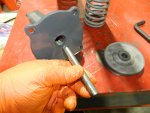
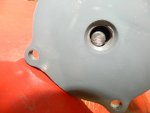

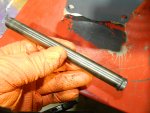
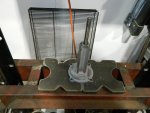

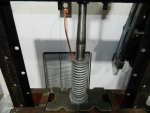

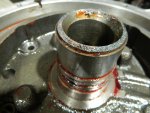

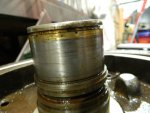








For those who question whether the output shaft needs that bushing, here's the TM 9-8025-2 manuals answer for that.
View attachment 936406View attachment 936407
So far on six 303M transmissions I have torn down this year. None had this bushing installed.
I truly believe the "factory" screwed up here. So every military rebuilder afterwards didn't even look for a bushing here since these two pages (160 and 161) are the only place in the whole manual even mentioning this bushing. Civilian mechanics would have known there was supposed to be a bushing here, like I did.
I'm pretty disappointed in the quality and layout of this manual. It's like a child put it together. Or an absent-minded person. There is no clear line of disassembly or reassembly. There are parts I know I read but after looking for hours I cannot find that passage again. Really makes me mad as I was going to mark this one page but thought I'll do it tomorrow as I was tired and wanted to go to bed.
I'll find it, but I shouldn't need to try and find information like that. Civilian manuals are clear and precise. They of course need to be as the mechanics would lose the company money if they needed to find information and had to spend hours trying to find it.
Of course, my observations are five decades to late !
If I started to use "sticky" notes, my manual would look like the paper "recycle bin" !Sticky post it notes to tab the pages my friend. Will save you hours of hair pulling. Most of our Marine TM's come in german or some other variety of non english interwoven with pages of english on the reverse( but not consistiently) page. This trick has litterally saved my life and the lives of others..





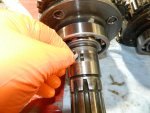

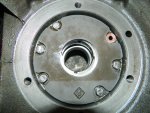

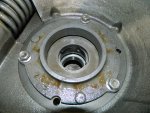
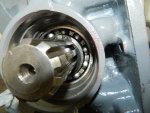



 You can see that one has a larger internal hole size. That one needs to go against the rubber seal. I've drawn a rather crude picture, but it gives you the general idea.
You can see that one has a larger internal hole size. That one needs to go against the rubber seal. I've drawn a rather crude picture, but it gives you the general idea. The rubber seal will go in the recess first, then the washers. After that you will install the shifter shaft and then a gasket and then the separator plate.
The rubber seal will go in the recess first, then the washers. After that you will install the shifter shaft and then a gasket and then the separator plate.Nope. Missunderstanding. My fault for using a capital M.If I started to use "sticky" notes, my manual would look like the paper "recycle bin" !
Side note here. Are you still active duty ?
I was in the Marines from late 1981 to 1987 .
M60A1 Rise Passive, Oh-Ra !!!!
 You can see the damage to the splines here. Throw parts like this away !
You can see the damage to the splines here. Throw parts like this away !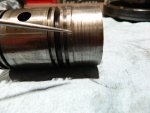 This center support is ground down, totally useless. Throw away !
This center support is ground down, totally useless. Throw away ! You can see how the guide pins are gouged out here. The clutch plates will grab these grooves. Throw away this part !
You can see how the guide pins are gouged out here. The clutch plates will grab these grooves. Throw away this part !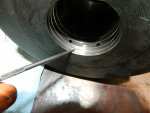 This rear clutch housing is so severely grooved out there is no way it can be repaired. Throw it away !
This rear clutch housing is so severely grooved out there is no way it can be repaired. Throw it away !Let us know how this goes rusty-the making of parts. I would be interested in purchasing some parts for my own rat-holing. With some of these harder to find components it would be nice to solve this problem.With that in mind I'm having my machinist friend looking into "refabing" parts that experience heavy wear and damage on them.
Parts like the "oil delivery sleeve" and the "rear bearing support" assembly and of course the front pump's "vanes" .
GM on it's Turbo 400 transmission had cast-iron housings that had pressed in "steel" parts. The front pump is a prime example. The "stator support" was made out of steel while the pump housing was made out of cast-iron.
The steel section was made replaceable due to extreme wear.
If the large casting of the "rear bearing support" could have its center support machined out and a steel replacement pressed in that would be a game changer. No more broken snap-ring grooves for one.
Also the "oil delivery sleeve" could easily be made out of 4140 steel.
I'm taking a sample down to the machinist next week.
The front pump "vanes" should also be an easy part to machine. They will need to be heat treated afterwards though.
With gaskets and oil lip seals and sealing rings still being made, and clutch plates still being made, and bands being relined, all that is needed is a few oil lip seals and some sealing rings made up.
We'll see.
I've been sick for a few weeks and then my family went to Victoria BC for Christmas.QUOTE]
Sorry you're under the weather. Rest up and take care. It wouldve been great to see you while you were on the island.
The one thing i cant buy, is the thing i need most..time.

